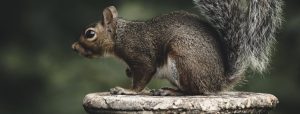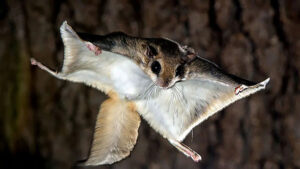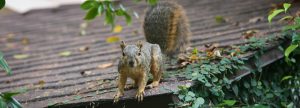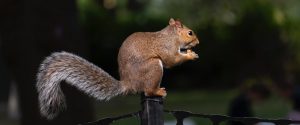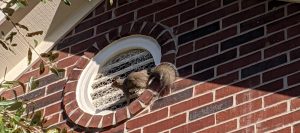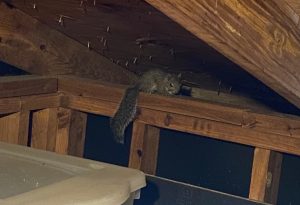Squirrels build their nests (also called dreys) in shelter locations high above the ground. Typically they are built inside tree cavities or between large tree branches. Squirrels use twigs, dry leaves, and grass for their nests. Squirrels will pick nesting locations close to abundant food sources. A yard full of birdseed or acorns will attract squirrels.
Your attic space is also a perfect location to build a squirrel nest. When squirrels nest in attics, dreys often become a fire hazard, due to tree squirrels’ well documented habit of gnawing on electrical wiring.
How Do Squirrels Build Nests?
Almost always built on the forks of tree branches, squirrel dreys begin as a collection of gnawed-off branches bearing green leaves. It is believed that squirrels harvest these branches before autumn—when the leaves would otherwise fall—so that the leaves will continue to cling tightly to the branches even after they start shrinking and withering.
The branches are woven into a foot-wide sphere, the inside of which is lined with a variety of materials including moss, grass, leaves, pine needles, and shredded bark. These materials act as insulation, keeping the squirrels and their offspring warm throughout the winter months.
Squirrel Nests in Attics
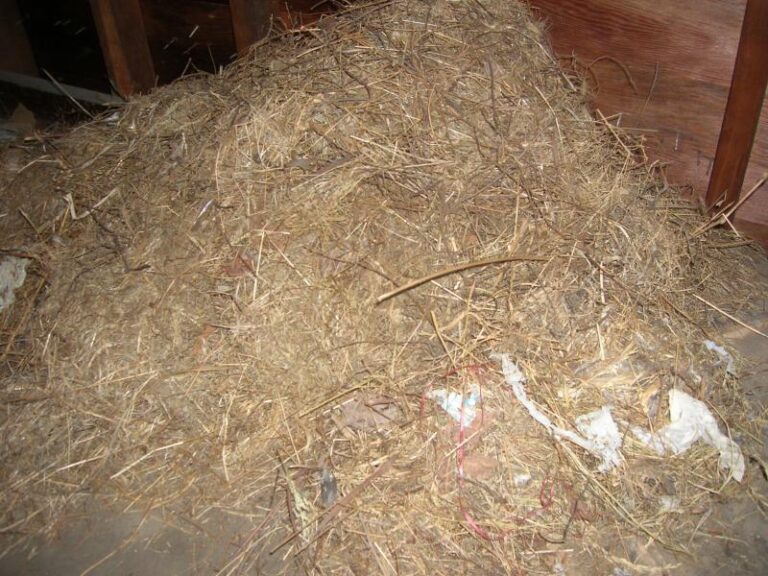
It is not uncommon for squirrels, especially adult females, to build nests in attics. Attics provide mother squirrels a stellar location to raise their young in that they are
- Warm and dry
- Elevated from predators
- Chock-full of squirrel nest construction materials
Inside an attic squirrels can build a nest with shredded paper, cardboard, fabric and bits of insulation.
If you come across a squirrel nest in your attic, do not approach. Squirrels are wild animals and can be dangerous.
Squirrel Nest Removal
Squirrels, like most rodents, can and will do damage to your house over time. Indeed, even gaining access to an attic often requires that they chew their way in. The most obvious squirrel sign is the sound of scurrying in the ceiling.
Once they’ve established themselves in your attic, bigger problems occur. They will constantly gnaw on wood, insulation, and even wiring (increasing the likelihood of a house fire). Squirrels will soil insulation with feces and urine (another common sign of squirrels is the odor). Squirrel infestations can introduce other pests like fleas and diseases like leptospirosis or salmonella.
Squirrel removal should be attempt at the first sign of a squirrel problem (here’s a guide that can help determine what kind of animal is occupying your attic). However, since nests in attics are frequently inhabited by mother squirrels raising young, removing them can be a delicate affair. If you have any doubts in your ability to relocate a squirrel family safely and humanely, you should consult with a professional service.
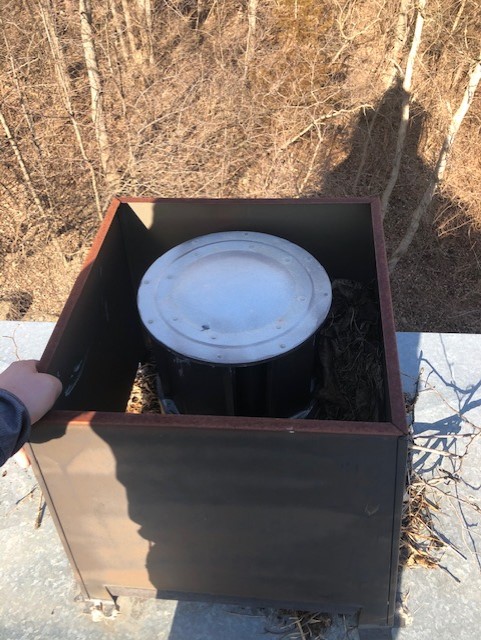
How to Get Rid of Squirrels
DIY Squirrel Deterrents
Squirrels choose to live in attics is because they are uninhabited. Giving squirrels the opposite impression—that an attic is in fact inhabited—is one of the simplest things homeowners can do to get rid of squirrels. Place a radio and/or strobe light in the attic and leave it on for an extended time. A visual or auditory squirrel repellent has some effectiveness. If squirrel babies are present, the female is unlikely to leave. If the squirrels do leave, seal up the entryways after they’re gone. Otherwise, squirrels will become acclimated to the deterrents and return.
If DIY squirrel control doesn’t work, call a professional to effectively get rid of the squirrels.
One-Way Doors
One-way doors are one of the safest means of squirrel removal tactics. First, the expert at Trutech locate all entry points the squirrels are using; these will often be gnawed holes under eaves or soffits. We install the one-way door on an entry point and seal the rest. After the squirrels leave, remove the door, and seal the entry.
Squirrel Traps
At Trutech, we also set squirrel traps with bait to remove squirrels from your attic.
As before, if squirrel babies are present, you will need to retrieve the babies with proper animal handling gloves or, better yet, call a professional service.
- Live squirrel traps should be securely placed on a roof, in an attic, or on the ground; however, choosing a location on the ground may lead to catching non-target squirrels.
- When using live traps, it is important to thoroughly inspect the attic before sealing entry points because you need to ensure you caught all target squirrels.
You will need the proper PPE for the job. If squirrels are in your attic, there will likely be squirrel feces and urine in your attic, which carry bacteria that you don’t want to breathe in. Respirators and animal handling gloves should always be used.
After removing squirrels, we clean and sanitize the attic, for the reasons mentioned above.
DIY Squirrel Control
After removing the squirrels from your attic, clean up the nest, and replace any soiled insulation. Once your attic has been restored to its former state, we make sure squirrel infestations stop with exclusions.
There are some best practices to prevent squirrel problems.
Here are some of the most effective habitat modifications:
- Trim any trees that provide access to your roof.
- Keep your yard clear of debris that can be utilized as nesting material.
- Make sure bird feeders are located where squirrels can’t jump onto them—or remove them entirely.
- Consider removing birdbaths. Squirrels are just as attracted to them as birds.
- Inspect your property for any potential entry points. If any entry points are found, have them repaired.
- Let out your pets—cats and dogs make a great squirrel deterrent, and they’ll probably appreciate the exercise, too.
Generally, no. If the squirrels aren’t in your house, it’s best to live and let live.
With that said, you can attempt DIY squirrel control by wrapping a two-foot-wide metal collar around the trees, about six to eight feet off the ground. This can prevent squirrels from climbing the tree trunks. Squirrels are excellent jumpers and easily traverse through the tree canopy.
Only do this when there aren’t any squirrels nesting in the tree. The most common squirrels, the gray squirrel, can have two litters a year usually in early spring and late summer. The baby squirrel will not be mature enough to leave the nest on its own for ten to twelve weeks.
Squirrels will return to the same nest year after year. Pruning the tree when the nest is empty can be an effective squirrel control tactic in the yard.


